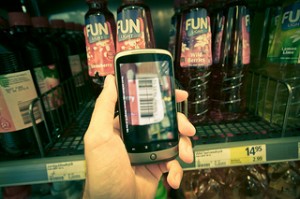something called “Transformability.” Two separate topics, but I’ve had reason to think about both lately—so here are a few comments:
First. I had to fill out a job application online. Only sort of a “job” application, really, because I was responding to a project opening advertised on a fairly specialized niche board, and it was not a full-time employee position, but rather a part-time, virtual “opportunity.” In short, the sort of thing that is usually handled by submitting a CV, samples, cover, etc. However the entity involved is an educational institution, and they wanted an application, so by golly, I jumped into the process.
NOT a good experience!
There were two problems. (A) The application was a complete misfit for the opportunity, asking questions that not only didn’t apply, but really couldn’t be answered by most people who would be responding. But (B) even if I had been seeking the kind of position the application was designed for, the process of filling it out would have been very frustrating. It went on for MANY pages/screens, with no indication of where I was in the process, or when (if ever) it might end. When I started the application I had no hint of what would be involved—and once I began, the only connection to the application form was the Continue button. The path of no choice just led deeper into the maze, and since the MANY questions in the application had no groupings and no discernible order, it wasn’t even possible to make an educated guess about how far along I might be.
The questions on each page were in a complete vacuum (i.e., no context, no way of referencing previous questions)—and I began to notice that new questions were similar to ones I’d already encountered. I wondered how question 36 differed from the very similar 23. No way to compare. So was the similarity a psychological test of consistency? Why else ask twice in different ways? Was it nuanced, or just careless?!
And there’s always a slim chance the whole thing was intended to discourage applicants, or test their tolerance for frustration. But more likely, I’d guess that different stakeholders wanted to have their questions included on the application in their very own words, so the form became kind of a collage, with similar questions that might be redundant–or might merit completely different answers if the applicant had any context to go by. Who knows?
Very likely, someone just took the paper application and made it clickable, so all the problems of the original became that much worse. As for my experience–with no way to stop and save the work I’d already put in, I slogged on to the end, but was pretty cranky by the time I put N/A into the last blank. One thing I was sure of: the completed application did not provide very much that would be useful for evaluating me as a candidate.
I see that my rant has used up all of today’s post, so Transformability will have to be covered next time. Meanwhile, some suggested takeaways:
- See how upsetting a bad application form can be?
- Web-based application forms need to be web-user-friendly. Putting a paper application online is bad.
- Different types of opportunities require different types of applications—or at least enough flexibility for the form to be used in different ways by different applicants. One-size-fits-all is bad!
Cynthia Giles has followed a serpentine career path from academia to publishing to marketing and design to information technology and corporate communications. There’s plenty of detail about this journey at www.cynthiagiles.com, but briefly--the common theme has been ideas, and how to present them effectively. Along the way, she became an accidental expert on data warehousing and business intelligence, and for the past ten years she has combined corporate contracting with an independent consulting practice that focuses on marketing strategy for smaller businesses and non-profits.
Having spent quite a bit of time looking for work, and anywhere from two weeks to two years inside a wide variety of American companies—she has given much thought to what works (and what doesn’t) when it comes to creating a great employment fit.


